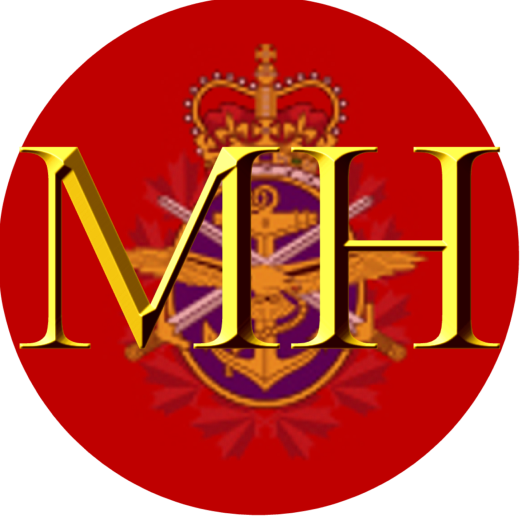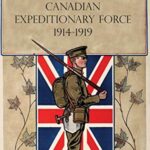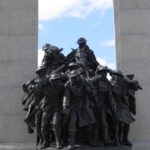The Upper and Lower Canadian Rebellions: A Detailed Study
The Upper and Lower Canadian Rebellions of 1837-1838 stand as pivotal moments in Canadian history, not for their military success but for their role in catalyzing political change. The two rebellions, one in predominantly French-speaking Lower Canada (now Quebec) and the other in largely English-speaking Upper Canada (now Ontario), were borne out of long-standing grievances about governance, representation, and economic disparity. Although both rebellions ultimately failed as military uprisings, they exposed deep flaws in colonial administration and set the stage for significant constitutional reforms that would reshape British North America.
Background: Two Colonies in Crisis
To understand the causes of the rebellions, we must first examine the conditions in Upper and Lower Canada during the early 19th century. Both colonies were governed by British authorities, but they were distinct in their cultural composition, political structure, and economic challenges.
In Upper Canada, founded in 1791 to accommodate Loyalist settlers fleeing the American Revolution, the population was primarily English-speaking. The colony was governed by a small, conservative elite known as the Family Compact, which controlled both the executive and legislative councils. Although the colony had an elected Legislative Assembly, the real power rested with the governor and his appointed councils, all of whom were dominated by this elite class. The grievances of the population centered on the lack of democratic representation, the influence of the Anglican Church, and the monopolization of economic opportunities by the Family Compact. The bulk of the population, composed of farmers and tradespeople, found themselves increasingly frustrated with their lack of political influence.
In Lower Canada, the situation was even more complicated. The population was overwhelmingly French-speaking, descendants of the original settlers of New France. Although Britain had taken control of the colony after the Seven Years’ War, the French-Canadian population retained its language, culture, and legal system, including the seigneurial system of land tenure. However, like Upper Canada, Lower Canada was ruled by an English-speaking elite, often referred to as the Château Clique. This ruling class controlled the executive and legislative councils, leaving the French-Canadian majority with little say in the colony’s governance. Economic hardships, exacerbated by poor agricultural conditions and unfair taxation, further deepened the grievances of the habitants (rural French-Canadian farmers).
By the early 1830s, both Upper and Lower Canada were experiencing rising political tension. In Upper Canada, reformers demanded democratic reforms, including responsible government—where the executive would be accountable to the elected assembly rather than to a colonial governor. In Lower Canada, French-Canadian reformers sought not only responsible government but also the preservation of their cultural and linguistic identity. In both colonies, reformers saw the colonial governments as corrupt, inefficient, and unresponsive to the needs of the people.
Causes of the Rebellions: Grievances and Demands for Reform
At the heart of both rebellions lay deep-seated grievances related to political power, economic inequality, and cultural identity. However, the specific causes in each colony varied, reflecting their distinct social and political landscapes.
Upper Canada: Reform vs. the Family Compact
In Upper Canada, the central issue was political reform. The colony was governed by an oligarchy, the Family Compact, which held a stranglehold on both the executive and legislative branches of government. Although there was an elected Legislative Assembly, its powers were severely limited. The real authority rested with the appointed Executive Council, which was dominated by members of the Family Compact—wealthy, conservative Loyalists who believed in maintaining close ties with Britain and preserving their own privileged position. The Assembly, though elected, could be overruled by the governor and his council on key issues, particularly those involving taxation, land grants, and public works.
This system of governance led to widespread discontent among the colony’s settlers, who increasingly felt that their interests were being ignored. Many of these settlers, particularly in the rural areas, were farmers who had emigrated from the United States or Britain, and they were familiar with more democratic forms of governance. They resented the Compact’s control over land distribution, its favoritism toward the Anglican Church, and its use of public funds to benefit a small elite.
William Lyon Mackenzie, a fiery and outspoken reformer, emerged as the leader of the opposition to the Family Compact. Mackenzie, a Scottish immigrant who had become a newspaper publisher, used his paper, the Colonial Advocate, to rail against the corruption and authoritarianism of the colonial government. He was a passionate advocate for responsible government, a system in which the executive would be accountable to the elected assembly rather than to a governor appointed by Britain. Mackenzie’s calls for reform resonated with many of the colony’s settlers, particularly in the rural areas, where dissatisfaction with the elite was strongest.
By the mid-1830s, the reform movement in Upper Canada had gained significant momentum, and Mackenzie’s rhetoric became increasingly radical. However, his demands for change were repeatedly ignored by the colonial government. The British Parliament’s rejection of petitions for reform in 1837, combined with the economic hardships of the time, pushed Mackenzie and his followers toward armed insurrection.
Lower Canada: Nationalism and Resistance to British Control
In Lower Canada, the grievances of the French-speaking population were deeply intertwined with issues of cultural identity and autonomy. The Château Clique, an English-speaking elite, dominated the political and economic life of the colony, much to the resentment of the French-Canadian majority. Although the colony had an elected Legislative Assembly, it was often at odds with the appointed Executive Council, and any reforms proposed by the Assembly were frequently blocked by the governor and his council.
The French-Canadian reform movement was led by Louis-Joseph Papineau, a charismatic lawyer and politician who became the champion of French-Canadian rights. Papineau was the leader of the Parti Patriote, a political party that sought to preserve the unique cultural and legal institutions of the French-Canadian people while also pushing for political reforms, including responsible government. Papineau and his followers issued the 92 Resolutions in 1834, a list of demands for reform that included greater autonomy for the colony, the protection of French-Canadian culture, and an end to the arbitrary rule of the governor and his council.
The British response was dismissive. In 1837, the Russell Resolutions, issued by the British Parliament, rejected the key demands of the Parti Patriote and reaffirmed the authority of the colonial governor. This rejection was seen as a direct affront to the French-Canadian people and their aspirations for greater autonomy. Economic hardship, particularly in the rural areas, further fueled the unrest, as many habitants faced rising taxes, land disputes, and poor harvests.
While Papineau had initially advocated for peaceful reform through constitutional means, the rejection of the 92 Resolutions led him to conclude that peaceful avenues for change were no longer viable. Like Mackenzie in Upper Canada, Papineau turned to armed rebellion as a last resort.
The Main Players: Mackenzie and Papineau
The Upper and Lower Canadian Rebellions were led by two very different men, each driven by a passion for reform but motivated by distinct concerns reflective of their respective colonies.
William Lyon Mackenzie, the leader of the Upper Canada rebellion, was a man of restless energy, sharp wit, and uncompromising principles. A Scottish immigrant who had risen to prominence as a newspaper editor and politician, Mackenzie was fiercely opposed to the oligarchic rule of the Family Compact. He viewed the Compact as a corrupt and self-serving clique that stifled the political and economic aspirations of the colony’s settlers. Mackenzie’s fiery speeches and radical rhetoric made him a polarizing figure—revered by reformers and despised by the colonial elite. By 1837, Mackenzie had grown impatient with the slow pace of political change and became convinced that armed insurrection was the only way to achieve meaningful reform.
Louis-Joseph Papineau, by contrast, was a more cautious and measured figure. A lawyer by training and an eloquent speaker, Papineau was deeply committed to the preservation of French-Canadian rights and culture. His leadership of the Parti Patriote and his advocacy for responsible government had made him a hero among the French-speaking population of Lower Canada. However, unlike Mackenzie, Papineau was initially reluctant to embrace violence. He had spent years working within the constitutional framework of the colony, hoping to achieve reform through peaceful means. It was only after the rejection of the 92 Resolutions that Papineau, reluctantly, joined the call for rebellion.
The Rebellions Erupt: Fighting in Upper and Lower Canada
The uprisings in Upper and Lower Canada, though sparked by similar frustrations, unfolded in different ways. The rebellion in Lower Canada was larger, more sustained, and more violent than that in Upper Canada, where the revolt was poorly organized and quickly crushed.
Lower Canada: The Patriote Uprising
The rebellion in Lower Canada began in November 1837, when tensions between the Patriote movement and the colonial government reached a boiling point. Papineau and his supporters, frustrated by the failure of peaceful reform efforts, began organizing rallies and preparing for armed conflict. The colonial government, alarmed by the growing unrest, issued warrants for the arrest of Papineau and other Patriote leaders.
The first major clash occurred at Saint-Denis on the Richelieu River on November 23, 1837. There, a group of Patriote rebels, led by Wolfred Nelson, successfully repelled an attack by British troops. This initial victory gave the rebels hope, but it was short-lived. A few days later, at Saint-Charles, British forces crushed another group of rebels, killing many and capturing their leaders. The final decisive battle took place at Saint-Eustache on December 14, 1837, where British forces, under Sir John Colborne, overwhelmed the rebels and set fire to the village. The rebellion was effectively crushed, though sporadic resistance would continue into the following year.
The Patriotes attempted a second uprising in 1838, when a group of exiled rebels, known as the Frères chasseurs (Hunter Brothers), launched a series of raids across the border from the United States. However, these raids were poorly coordinated and easily repelled by British and loyalist forces. By the end of 1838, the rebellion in Lower Canada was over.
Upper Canada: Mackenzie’s Rebellion
The rebellion in Upper Canada unfolded in December 1837, but unlike the more sustained resistance in Lower Canada, the uprising here was disorganized and quickly suppressed. On December 4, 1837, Mackenzie and his followers gathered at Montgomery’s Tavern, north of Toronto, to plan their attack. Their goal was to seize control of Toronto, overthrow the colonial government, and establish a republic.
The plan, however, was poorly conceived and even more poorly executed. When the rebel forces, numbering around 800, marched on Toronto, they were met by a much smaller but well-trained group of loyalist militia and British regulars. In a brief but decisive clash, the rebel forces were scattered, and Mackenzie fled. He sought refuge in the United States, where he attempted to continue the rebellion by establishing a provisional government on Navy Island in the Niagara River, but this effort was also short-lived.
The rebellion in Upper Canada, lacking the popular support and organizational structure of the uprising in Lower Canada, was effectively over within a few weeks. Mackenzie fled into exile, and the remaining rebels were either captured or dispersed.
The Reactions of the Governments: British and Colonial Responses
The British and colonial governments responded swiftly and decisively to the rebellions. In both Upper and Lower Canada, martial law was declared, and British troops, supported by loyalist militias, were deployed to crush the uprisings.
In Lower Canada, the rebellion was met with harsh reprisals. Hundreds of Patriotes were arrested, and dozens were executed or deported to the penal colonies of Australia. The British authorities, determined to prevent further unrest, cracked down on French-Canadian political activity and placed the colony under military rule. Papineau fled into exile in the United States, where he remained until the political climate in Lower Canada had cooled.
In Upper Canada, the response was similarly swift, though less severe. The colonial government, under Sir Francis Bond Head, moved quickly to suppress the rebellion, arresting many of the key leaders and dispersing the rebel forces. Mackenzie fled to the United States, where he would spend several years in exile before returning to Canada in the 1840s. Although the rebellion in Upper Canada was less bloody than that in Lower Canada, the colonial authorities took it as a serious threat and responded accordingly.
The British government, alarmed by the rebellions and the underlying grievances they revealed, recognized that the colonial system needed reform. In 1838, the British government appointed Lord Durham to investigate the causes of the rebellions and to recommend changes to the governance of the colonies. His report, known as the Durham Report, would become one of the most important documents in Canadian history.
The Durham Report and the Results of the Rebellions
The Durham Report, published in 1839, was a watershed moment in the history of British North America. Lord Durham, after investigating the causes of the rebellions, concluded that the primary source of unrest in both Upper and Lower Canada was the lack of responsible government and the exclusion of the majority of the population from meaningful political participation.
Durham’s recommendations were far-reaching. He called for the union of Upper and Lower Canada into a single colony, which would become known as the Province of Canada. He also recommended the introduction of responsible government, where the executive branch would be accountable to an elected assembly rather than to a governor appointed by Britain. His report also addressed the issue of cultural tensions in Lower Canada, recommending the assimilation of French-Canadians into British culture—a proposal that was met with deep resistance from the French-Canadian population.
In 1841, the British Parliament passed the Act of Union, which merged Upper and Lower Canada into a single colony with a unified government. Although responsible government was not fully implemented until the late 1840s, Durham’s report laid the groundwork for the eventual establishment of democratic self-government in Canada.
The legacy of the Upper and Lower Canadian Rebellions is complex. Although the rebellions themselves were military failures, they succeeded in drawing attention to the deep political and social grievances in the colonies. The reforms that followed, particularly the introduction of responsible government, marked a turning point in Canadian history and set the stage for the eventual Confederation of Canada in 1867.
In the end, the rebellions were not just about grievances over taxation or political representation. They were about the desire of the people of Upper and Lower Canada to have a greater say in their own governance and to assert their rights in the face of a colonial system that was increasingly out of step with their needs and aspirations. The rebellions, and the reforms that followed, were part of a larger story of Canadian self-determination and the slow but steady march toward democracy.



